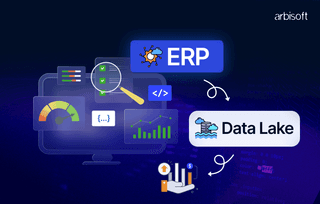We put excellence, value and quality above all - and it shows




A Technology Partnership That Goes Beyond Code

“Arbisoft has been my most trusted technology partner for now over 15 years. Arbisoft has very unique methods of recruiting and training, and the results demonstrate that. They have great teams, great positive attitudes and great communication.”
Test-Driven Development? Is it the same as unit testing?

What is Test Driven Development?
Test-Driven Development (TDD) is a smart and proactive way to build software. Instead of writing the code first, TDD flips the script: it starts by creating test cases based on the project’s requirements. These tests act as a blueprint, ensuring that the code you write later does exactly what it’s supposed to. Once the code is developed, running these pre-written tests provides immediate feedback, confirming that the requirements are met and the code behaves as intended. This approach is particularly effective in catching defects early, saving time and effort down the road.
Now, let’s dive into why adopting TDD can be a game-changer for your development process. We’ll explore the tangible benefits it offers, as well as the challenges you might encounter along the way.
Understanding Test-Driven Development
Core principles of TDD
Test-Driven Development (TDD) isn’t just about testing—it’s a mindset for approaching software development. At its core, TDD shifts the focus to building software by crafting tests first, and then writing code that meets those tests. This approach ensures that nearly every effort in development revolves around verifying what we create, making the process both intentional and precise.
TDD encourages an iterative approach to design and development. By working in smaller, manageable steps, it becomes easier to understand each phase of the process. This incremental style not only makes the journey more organized but also leads to higher-quality code that’s easier to maintain.
In fact, research published in 2014 highlights that even simple coverage testing can prevent most critical failures. It found that the majority of production issues are caused by straightforward programming mistakes—problems that TDD’s proactive testing approach can catch early, long before they reach users.
The logical errors that programmers make while writing almost any kind of code. The report further elaborates that 58% of these mistakes are trivial and can be eliminated easily by statement coverage testing. This means that If we can test the basic level of our code at the time of its development, we can really eradicate more than half of our defects in the development phase.
This will ensure that a particular code segment is doing what it was supposed to once its development is completed. This surely seems shocking but you just made your software almost 60% more reliable just by adding this basic step in your development process.
Now let's dive deep into how we can test the code at the very beginning level, in fact even at the level when the code is not even written.
TDD Process Step-by-Step (Red-Green-Refactor)
Test Driven Development or TDD is a term first introduced in 2002 by Kent Beck in his book Test-Driven Development By Example
TDD consists of 5 steps:
1. Writing a failing test
You start your development process by writing a test case that passes only if the feature specifications are met. This encourages you to start thinking about the requirements from the very beginning of the development cycle.
2. Run the tests
The second step is nothing more than executing the tests but wait a minute, you’ve not yet developed the feature so it means that the tests will fail and that’s exactly what we wanted. These tests must fail because you want to make sure that you’re really adding something new and that the tests are properly testing that specific part.
3. Write the feature code
This step is all about actually writing the code that makes up your feature. So in this step, write the simplest code that can pass the tests. Your code doesn’t have to be perfect but make sure that it adheres to the specifications (which can be confirmed in the next step once we run the tests again).
4. Make all tests pass
Once you’re confident that the code works, now ensure that all tests pass, similar to how qa testing services systematically verify that every component meets quality standards. This ensures that the new feature adheres to the specifications and doesn’t break any other components.
5. Refactor and improve
While running your tests, ensure that all tests pass whenever you make improvements to the existing code.
This is the complete TDD process, which you can repeat by writing new tests that initially fail, writing the code to make them pass, and then refactoring the code. This cycle of writing failing tests first (Red), then implementing code to make them pass (Green), and finally improving the code (Refactor) is commonly referred to as Red-Green-Refactor.
Example of TDD with Pytest (Python)
Pytest is a versatile testing framework for Python that makes TDD straightforward. Here’s how to use TDD with Pytest (make sure you have Pytest installed in the development environment):
1. Write a failing test (Red)
# test_calculator.py
import pytest
from calculator import Calculator
def test_add():
calculator = Calculator()
assert calculator.add(2, 3) == 5
2. Implement the Minimum Code to Pass the Test (Green)
# calculator.py
class Calculator:
def add(self, a, b):
return a + b # Simple implementation
3. Improve the code (Refactor)
class Calculator:
def add(self, a: float, b: float) -> float:
if not isinstance(a, (int, float)) or not isinstance(b, (int, float)):
raise TypeError("Both inputs must be numeric types")
return a + b
TDD vs. Unit Testing: Clearing the Confusion
Unit testing involves testing small pieces of code to ensure individual parts of a program function correctly on their own. Typically, developers write unit tests after a feature is fully developed to verify that it works as intended and meets expectations. These tests are created as standalone suites, focusing on the functionality of the completed feature.
How TDD Incorporates Unit Testing
Test-driven development takes unit testing to the next level by making it an integral part of the development process from the very beginning. Unlike traditional approaches where testing is often an afterthought, TDD weaves testing into the fabric of software design and implementation. This proactive approach helps developers identify and fix errors early, rather than tracing them back at the end of the development cycle.
The key difference lies in purpose and timing: TDD is not merely about writing unit tests—it’s about using those tests to guide and shape the software development process. It shifts testing from being a reactive measure to a proactive design strategy that informs every phase of the software lifecycle. Compared to traditional unit testing, TDD is a more iterative and design-driven methodology that enhances both the quality of the code and the efficiency of the development process.
Benefits of Test-Driven Development
- Improved code quality
TDD promotes writing clean, modular, and well-structured code as developers must consider requirements before coding. This leads to more deliberate coding practices that ensure functionality aligns with specifications
- Better design and modularity
Writing tests first requires developers to define clear goals for their code, fostering better design decisions that align with the overall architecture of the application
- Reduced bug rates
As shared in the report earlier, TDD allows for the immediate identification of bugs as tests are written before the implementation. This "fail-first" approach ensures that issues are addressed promptly, reducing the overall bug rate in the final product
- Easier maintenance and refactoring
Developers can refactor and optimize code with assurance, knowing that existing tests will catch any regressions or issues introduced during changes
Conclusion
TDD is closely aligned with Agile testing methodologies, that prioritize flexibility, collaboration, and customer feedback throughout the development process. By embedding testing within each stage of development, TDD supports agile principles by ensuring that software evolves in response to user needs and changing requirements.
This blog's primary focus was to explain that TDD is not just about testing; it encompasses a comprehensive approach to software development that integrates testing into every phase of the lifecycle. This methodology fosters better design practices, enhances code quality, and promotes efficient development processes. To support businesses in implementing TDD effectively, Arbisoft offers specialized testing services tailored to meet diverse organizational needs.
























